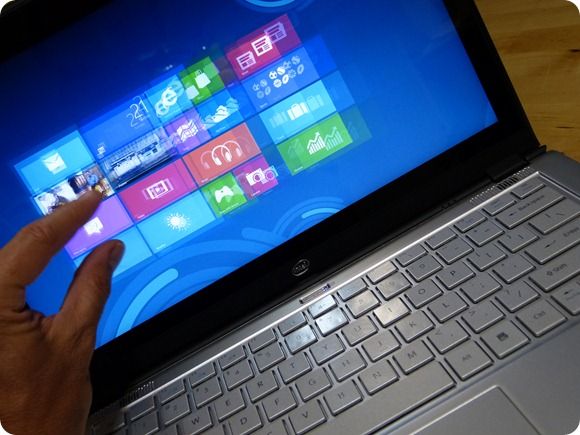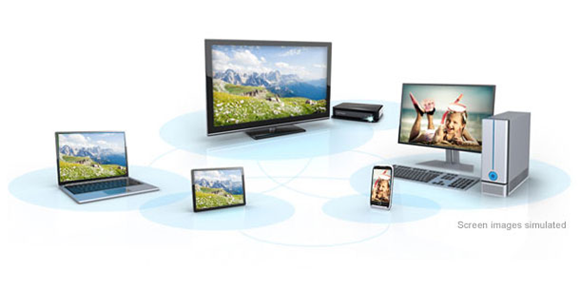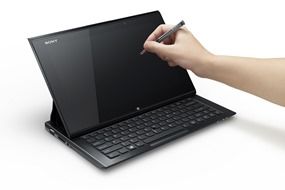In just a few hours the press will be gathering in San Francisco for the warm-up to IDF 2012. The Intel Developer Forum is the most important of the years IDF events as it represents the start of a new wave of marketing for Intel and allows analysts to piece together a picture of what Intel will get up to in 2013. In terms of Ultrabooks we already know that we’ve got Windows 8, touch and Haswell coming but there’s more to it than that. Here’s what you can expect from us over the next week as we attend 4 days of Intel events.
We’re all excited about what 2013 will bring in terms of new CPUs, graphics and other co-processors but don’t expect too much detail on that this week. We’ll get some hints and tips and we’ll be able to read between the lines but as Ivy Bridge is only just entering it’s peak sales period, as Windows 8 is on the horizon and as Intel have some new technologies up their sleeves, expect at least 25% of the event to focus on current generation Ultrabooks. Expect some blurry lines too as convertibles and tablets appear in both Ultrabook and consumer tablet space. The Samsung Series 5 and Series 7 range of ‘transformer’ style tablets are a classic, and somewhat confusing example. We should get a chance to test both ends of the spectrum for you.
Touch and Windows 8 will be huge and I wouldn’t be surprised to see Steve Balmer on stage with Paul Otellini. There’s about a month to go before Windows 8 launches and although you’re unlikely to see official product launches, you’ll definitely see a great showcase of devices and features. On Tuesday afternoon we’ll get a chance to test many of these devices so videos and opinions from us will be rolling out that evening. Intel have recently talked about 40 touch-enabled designs that will roll out through Q4 and Q1 2013 and of those, over ten could be convertible designs like the MSI S20, Sony Vaio Duo, ASUS Transformer Book, ASUS TaiChi and Toshiba U925T

We’re using a Windows 8 touch Ultrabook for our reporting this week at IDF. [More here]
Touch won’t be the only sensor demonstrated. Accelerometer, gyroscope, e-compass, ambient light sensor, NFC, wireless charging, web-cams as gesture sensors and enhanced control pads will all get air-time. We’ll get to talk to some of the manufacturers of these technologies too and we’ll be asking them where they see sensors fitting in on devices that could spend most of their life on a desktop.
One interesting development we’ll be looking out for is a demo of wireless charging and, in the same session, a demonstration of a smart watch.

We expect the Ultrabook to link up with Intel-based tablets, smartphones and server centers at IDF too. Intel call it the compute continuum and it can be looked at as intelligent connectivity. It’s not just about the cloud knowing about your device (and delivering content in an appropriate fashion) but it’s also about local connectivity. Wi-Fi direct should feature here.
In terms of software we expect to see a few partners out on stage. Cyberlink is a likely candidate for a Windows 8 metro-style video editing application that utilizes Intel quick-sync video hardware but we’ll also see smaller companies demonstrating too. We’ll get to meet the teams competing in the Ultimate Coder Ultrabook Challenge and in the showcase sessions we expect to see much more. There will be a software-related keynote from Rene James on Wednesday. "Security and Services in an Age of Transparent Computing."
Security will be a big theme here and we’re expecting to hear, and see, the launch of ‘Ultrabooks for Business.” VPro will feature heavily. More information on that here.
In terms of next years silicon we’re going to hear a few things. First, more details on the 10W TDP Ultrabook-focused ‘Haswell’ CPU. While this is likely to be a clock/turbo-limited version of a standard 13-15W ultramobile CPU it will be interesting to see exactly what designs will be possible. Theoretical 10hr laptops (plus see AOAC below) are a given but there’s a back story which could be interesting – how does it compare to Atom? Now that netbooks are gone, there’s space for Core to come down into this category. Will it also be a ‘low cost’ solution that allows designers to use lower cost thermal solutions and smaller batteries. You’re likely to see tablets and convertible style devices built using this new CPU but this could be a way for Intel to go ‘low cost’ on the Ultrabook category.
 In terms of Haswell (2013) in general, watch out for AOAC. Always On Always Connected is a Windows 8 smartphone-like sleep state that requires some ARM-like sleep states. Intel would do well to announce that the low-power versions of Haswell will achieve AOAC status making Ultraslates a very interesting proposition and increasing their dynamic range. We might get the first information on the graphics and performance increases. An outside bet would be a quad core Ultrabook but definitely on the cards are some ultra low power media playback capabilities.
In terms of Haswell (2013) in general, watch out for AOAC. Always On Always Connected is a Windows 8 smartphone-like sleep state that requires some ARM-like sleep states. Intel would do well to announce that the low-power versions of Haswell will achieve AOAC status making Ultraslates a very interesting proposition and increasing their dynamic range. We might get the first information on the graphics and performance increases. An outside bet would be a quad core Ultrabook but definitely on the cards are some ultra low power media playback capabilities.
Timescales for Haswell will be made a bit clearer. Expect ‘end of Q2’ although there could be a surprise related to Microsoft Surface Pro. Accelerating Haswell for Surface would cause a big stir. We’re keeping our fingers crossed that we’ll see Surface Pro this week in action with a Core CPU and AOAC.
Finally we’re likely to get more details on how the compute continuum is developing. That is – how Intel plan to tie devices from the Ultrabook, Tablet, Smartphone and Server world together with an intelligent local and internet-based connectivity
One more thing – battery technology. Once again I’ll be looking for battery technology announcements and investment. Once again, I don’t expect to be surprised by the outcome. 10-20% year-on-year improvements seem to be all this industry can deliver. If I get a chance I’ll put forward a tough question in the press event this morning – Why aren’t Intel directly investing in new battery technologies?
Stay with us this week for detailed coverage of IDF 2012 San Francis
co and hands-on with many of the new Ultrabooks coming your way in Q4.












I really don’t believe they’ll pull Haswell for a single customer. That would act as favoring one company, and they would need to pull the entire launch forward. While that works as a smaller company that sells few millions, not for a company like Intel with hundreds of millions shipping per year.
Didn’t Apple’s MBA get a lead on some of the first ULV CPU’s back when it launched?
Remember though, for Surface you are talking about not only launching it way before ULT Haswell chips, but even before the regular chips arrive.
Lower voltage chips always took longer to arrive for Intel than other chips, because low voltage chips are in the top of the binning “class”. Also it would cut down the lifetime of ULT Ivy Bridge by half to 6 months(since Surface is launching in Jan with Intel chips).
That is even more solidified by this article: http://www.anandtech.com/show/6248/haswell-at-idf-2012-10w-is-the-new-17w
“Early next year we’ll see limited availability of 10W Ivy Bridge ULV parts. These parts will be deployed in some very specific products,”
This IMO, means Surface.
Intel did accelerate some technology to make a custom chip specifically for Apple when the MacBook Air first came out:
http://www.anandtech.com/show/2422
Yea, we can continually improve the most complicated and advanced CPUs and GPUs, but for some reason the humble battery remains a challenge. Strange.
I have some idea on what Haswell’s TDP would end up like. First, based on the leaks I thought it would be this:
37/47/57W regular voltage
15W ULT
But very recently Intel has said Haswell ULT will be at 10W, significantly lowering their 15W.
So then I thought it would be:
37/47/57W regular voltage
15W ULT with 10W cTDPdown
But the Anandtech article suggested that even other chips are going to lower TDP. Intel has stated numerous times that they want to bring down the TDP design point from current 35W down to “less than half”.
Final guess:
15W is the “new” 35W
10W is the “new” ULT
Really hoping ultrabooks will creep into the netbook category. I mainly want an 10″ notebook with not too big of a bezel and a Core i CPU. I’m tired of Atom and the big architecture change next year or two probably won’t be enough for me.
It’d be great if the netbook is really dead if that meant notebooks with 10″ screens will have Core i3s or i5s with large batteries (ie. not really super thin) and not the complete disappearance of 10″ notebooks altogether. I’d definitely buy a “thick” 10″ nOtebook.
Something like the Panasonic J10 already got you covered if you don’t mind the price and that it’s really thick (aside from needing to have it imported).
While, the Surface Pro is going to be 10.8″ just like the regular Surface… Just thicker… So we should start seeing others start dipping below the normal 11.6″ limit.
Though, for now, most will likely be ARM and ATOM based at 10″ and at a more desire-able price range.